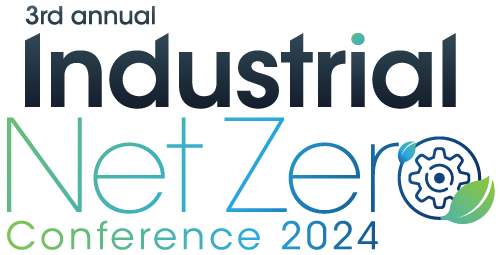By Agnes King
Heavy industry is seeking protection for domestic decarbonisation investments.
Heavy industry is urging the Australian government to avoid delays in introducing a cross border adjustment mechanism (CBAM) to protect domestic decarbonisation investments from trading partners with more relaxed regimes.
Europe has already introduced a CBAM which imposes a tariff on certain carbon intensive goods. This has triggered a policy response in the US, while Australia is expected to assess the feasibility of a CBAM by October.
“CBAM will ensure a level playing field and avoid unfair competition with imported products from countries with less mature carbon pricing regimes,” Antony Taylor, Orica’s Head of Safety, Health, Environment and Security, says.
He says businesses face short term headwinds in the transition, and a concerted effort is required to maintain Australia’s sovereign manufacturing capability.
Making headway
Despite the capital intensity of decarbonising their operations, heavy industry is making progress.
Orica has increased its reduction target for net operational Scope 1 and 2 emissions from 40 to 45 per cent by 2030.
Over the past two years, the global explosives company has completed the installation of tertiary nitrous oxide (N2O) abatement technology at its Carseland site in Canada, as well as all three nitric acid plants at its Kooragang Island facility in Australia. Carbon output has been almost halved at the Kooragang Island facility as a result.
Orica is now in the final stages of implementing tertiary abatement technology at its Gladstone facility in Queensland.
Meanwhile, beverage giant Lion has achieved its 2030 targets for Scope 1 and 2 targets seven years ahead of schedule, while progressively decreasing its waste and water consumption.
Tamara Sling-Ronen, Lion’s Environment Director, says its renewable power purchase agreement played a big role. However, she says efforts to go further are being hamstrung by insufficient electricity supply within the national grid.
“We are currently exploring the transition from gas-based to electric energy sources. However, we are cautious due to fluctuating costs associated with electrification, potentially leading to higher energy expenses for our organisation,” Sling-Ronen says.
Green power is also a key feature of Nestle’s decarbonisation efforts. Its factories, distribution centres, laboratories, and retail outlets across Australia and New Zealand are all powered by renewables.
Amanda Robertson, Nestle’s Head of Sustainability says the food company aims to source 20 per cent of key ingredients from farmers adopting regenerative agricultural practices by the end of next year.
At the same time, it continues to look for ways to improve packaging. Already over 80 per cent of Nestle’s plastic packaging can be recycled, while more than 40 per cent is made from recycled materials or natural resources that can be replenished.
Offsets on the nose
Diminishing reliance on carbon offsets, and a commitment to absolute emissions reduction is starting to take hold in the industrials sector.
Global flooring solutions company Interface announced in April it would eradicate carbon credits from its decarbonisation strategy, citing absolute emission reductions as “critical”.
Interface aims to be carbon negative, without offsets, by 2040. From next year, it will repurpose former offset investments to accelerate innovation projects that will result in direct carbon reductions and carbon storage both internally and throughout its supply chain.
Interface CEO Laurel Hurd said carbon negative carpet tile was the game changer. “We now know it’s possible to store more carbon than we emit, and we believe we can accomplish this across our product portfolio, from carpet tile to resilient flooring,” Hurd said.
Funding hurdles
Building a viable business case for decarbonisation projects is tough.
Low-carbon technologies are expensive. What’s more, they often don’t result in improved process efficiency or increased production output. The only benefit is a less-carbon intensive final product.
Taylor says leveraging carbon markets has been essential to supporting a positive investment case for Orica’s decarbonisation projects.
Government grants also play a key role in derisking credible projects.
Lion’s Sling-Ronen points to the Australian Renewable Energy Agency (ARENA) and the Clean Energy Finance Corporation (CEFC) as good examples of practical support encouraging businesses to be first movers when their natural inclination would be to fast follow.
No easy answers
Nestle’s Robertson says there are “no easy answers to decarbonisation challenges”.
We often hear that ‘we should just do this or that’, but the reality is that these are complex and interrelated challenges,” she says.
One of the biggest barriers is a lack of shared urgency across value chains.
“Many challenges need to be tackled at a system, not just at a company level. If there is not a common level of understanding of the problem and shared sense of urgency, it can be tough to mobilise action,” Robertson says.
Amid a cost of living crisis and corporate belt-tightening, finding new ways to take consumers on the journey is becoming increasingly difficult.
“If we leave the consumer behind, many of the changes will not be effective,” warns Robertson. “Real change will require government, industry, and society to move forward together.”
Tamara Sling-Ronen (Lion Co), Antony Taylor (Orica), Amanda Robertson (Nestlé Oceania) and Aidan Mullan (Interface Carpets) will join other industrial heavyweights including WesCEF, ExxonMobil, Tomago Aluminium, Holcim and Cement Australia at the Industrial Net Zero Conference, sharing insights about their decarbonisation journeys and how they are managing the cost of transition.
To access the detailed conference program, download the brochure here.
For more exclusive content written for energy industry professionals sign up to the Energy Insights blog.

